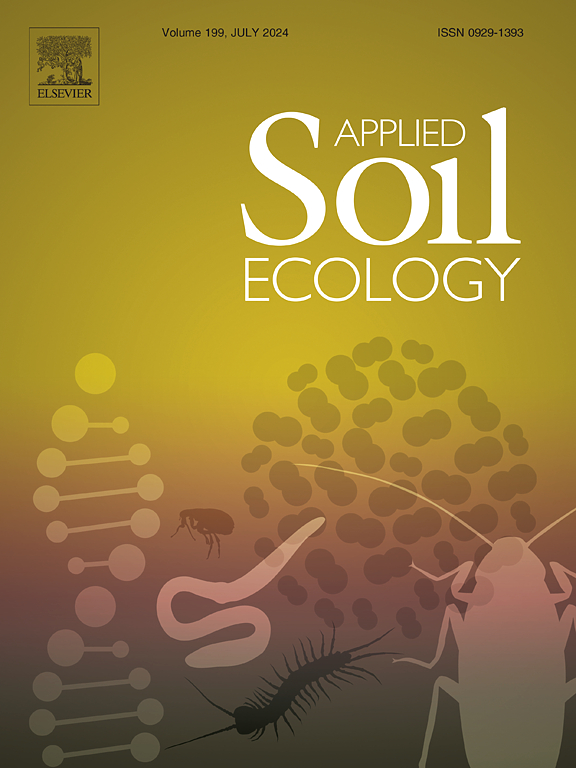Bacterial rrn copy numbers linked to soil function and crop yield in long-term manure-fertilized soils
IF 5
2区 农林科学
Q1 SOIL SCIENCE
引用次数: 0
Abstract
The 16S rRNA operon (rrn) copy number in bacteria has been proposed as a genomic trait linked to microbial life-history strategies and resource availability. Yet, its role in agroecosystems under different management histories is unclear. We investigated how soil microbial communities and metabolites respond to 36 years of varying manure fertilization strategies (chemical fertilizers with or without manure) using 16S rRNA gene amplicon sequencing and nontargeted metabolomics. Manure treatments favored copiotrophic bacteria, increasing the average rrn copy numbers while reducing oligotrophs. Microbial life-history strategies were primarily driven by C: N, SOC, and available phosphorus (AP). The rrn copy number was positively correlated with the abundance of genes encoding functions for C, N, and P cycling, as well as correlated enzyme activities, indicating that copiotroph-dominated communities in manure-fertilized soils exhibit a competitor strategy to utilize a broader range of resources. Significant correlations between soil metabolite profiles and rrn copy numbers, and strong interactions between copiotrophic strategists and key metabolites suggest that microbial communities with distinct life-history strategies harbor unique metabolic profiles. PLS-PM modeling and random forest analysis identified rrn copy number as a predictive trait for soil functions (metabolic profiles and enzyme activities) and maize yield. These findings highlight bacterial rrn copy number as a key trait underpinning the life-history strategies and functional potential of microbial communities in response to long-term manure fertilization.
长期施肥土壤中细菌rrn拷贝数与土壤功能和作物产量的关系
细菌中16S rRNA操纵子(rrn)拷贝数被认为是与微生物生活史策略和资源可用性相关的基因组性状。然而,在不同的管理历史下,其在农业生态系统中的作用尚不清楚。我们利用16S rRNA基因扩增子测序和非靶向代谢组学研究了土壤微生物群落和代谢物对36年不同肥料施肥策略(带或不带肥料)的反应。粪肥处理有利于助养细菌,增加了平均rrn拷贝数,同时减少了寡养细菌。微生物生活史策略主要由C: N、SOC和速效磷(AP)驱动。rrn拷贝数与C、N、P循环编码功能基因丰度及相关酶活性呈正相关,表明粪肥土壤中以共养为主的群落表现出利用更广泛资源的竞争策略。土壤代谢物剖面与rrn拷贝数之间存在显著的相关性,共生营养策略与关键代谢物之间存在强烈的相互作用,这表明具有不同生活史策略的微生物群落拥有独特的代谢谱。PLS-PM模型和随机森林分析表明,rrn拷贝数是土壤功能(代谢特征和酶活性)和玉米产量的预测性状。这些发现强调了细菌rrn拷贝数是支持微生物群落对长期粪便施肥的生活史策略和功能潜力的关键特征。
本文章由计算机程序翻译,如有差异,请以英文原文为准。
求助全文
约1分钟内获得全文
求助全文
来源期刊

Applied Soil Ecology
农林科学-土壤科学
CiteScore
9.70
自引率
4.20%
发文量
363
审稿时长
5.3 months
期刊介绍:
Applied Soil Ecology addresses the role of soil organisms and their interactions in relation to: sustainability and productivity, nutrient cycling and other soil processes, the maintenance of soil functions, the impact of human activities on soil ecosystems and bio(techno)logical control of soil-inhabiting pests, diseases and weeds.
 求助内容:
求助内容: 应助结果提醒方式:
应助结果提醒方式:


